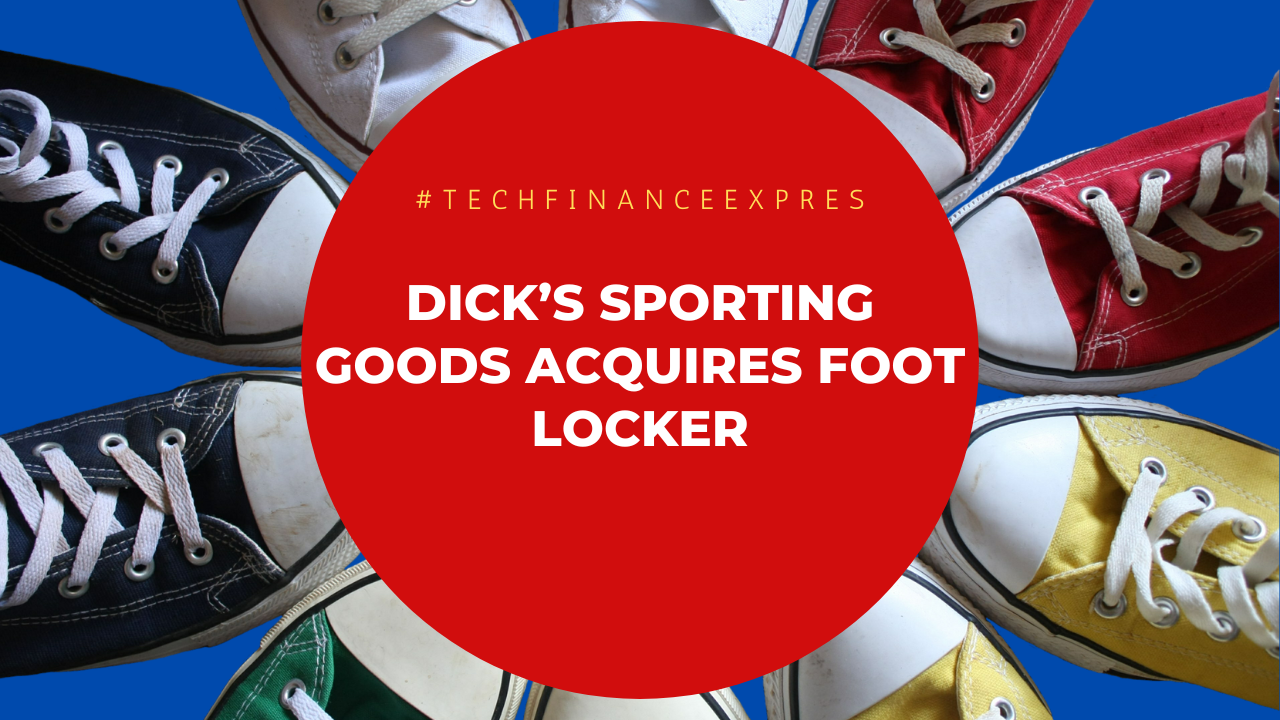$2.4 Billion Deal Shocker with Foot Locker taken over by Dick’s – Sneakerheads Rejoice
In a calculated and prominent move that would change the shoe retail scene, Dick’s Sporting Goods paid $2.4 billion to acquire Foot Locker. This agreement between two retail giants might create a new sneaker behemoth that would be competitive and reshape brand alliances.
Why did Dick’s Sporting Goods Acquire Foot Locker
With this acquisition, Dick’s Sporting Goods will benefit from gaining access to Foot Locker’s vast network presence, which includes roughly $8 billion in yearly sales and a significant mall presence throughout the United States. Despite recent difficulties, Foot Locker is still a well-known brand in the shoe industry.
Some of the issues that Foot Locker recently faced were closing of more than 20% of its locations worldwide since 2019 and a waning cultural influence.
Dick’s Sporting Goods views the merger as a chance to obtain a competitive advantage because of its solid in-store reputation and expanding goals in the footwear industry.
According to industry observers, the agreement may enable both businesses to work with companies like Adidas, Puma, and Nike more successfully in order to improve product offers and lessen their dependency on sales that are driven by discounts.
Could This Merger Reshape the Sneaker Market?
Yes, the deal could change the dynamics of the sneaker ecosystem by creating a dominant retail platform provided it is integrated effectively. This collaboration has the potential to increase product diversity, boost store performance, and improve the customer experience, according to Tom Nikic of Needham & Company.
Competitors like JD Sports, which is rapidly growing in the US market, would face direct competition from the new organisation.
How Will This Impact Major Sneaker Brands Like Nike, Adidas, and On?
Companies are keeping a careful eye on this merger, particularly Nike, which supplied about 59% of Foot Locker’s merchandise purchases in the previous year. As long as it continues to be appealing and innovate its products, a revitalised Foot Locker might result in increased volume sales for Nike.
Adidas and Puma, meanwhile, are hesitant. Given Dick’s strong relationships with several brands, Adidas might eventually find it difficult to increase its shelf space. Given its present poor performance in the US, Puma may become less visible in favour of more popular or well-positioned rivals.
Conversely, On Running, a new Swiss company, might gain from this. This agreement might help it expand its reach and reach younger U.S. consumers, as it has a close relationship with Dick’s but less visibility at Foot Locker.
The First Step Toward Success – Reviving Foot Locker
Dick’s must first stabilize Foot Locker, which has become irrelevant among its core shoe customer base. Critics emphasize on a lacklustre loyalty scheme, poor online experiences, and a dearth of new releases.
With their “Lace Up” strategy, redesigned FLX Rewards, and an updated mobile app, Foot Locker has made a course correction. Early success, according to CEO Mary Dillon, includes better customer interaction and more frequent purchases.
Dick’s sophisticated retail approach and technological prowess could significantly improve Foot Locker’s e-commerce and loyalty capabilities. In terms of winning back client loyalty, their long-standing collaboration with Nike’s rewards program may also be revolutionary.
A New Era for Multi-Brand Sneaker Retailing
According to experts, In addition to trainers, Dick’s might add stylish workwear from companies like Carhartt and performance-related accessories like sports hydration kits to Foot Locker’s product categories. This would create additional revenue streams in addition to improving the customer experience.
But it’s difficult to modify Dick’s strategy for Foot Locker’s customarily lower-class, fashion-conscious clientele. Regaining lost ground will require finding a balance between innovation and genuineness.
Final Thoughts: A Bold Bet with High Stakes
Dick’s Sporting Goods is betting big on this deal, and the whole shoe industry is watching. If effectively executed, this strategic combination has the ability to revitalise Foot Locker, upend traditional brand hierarchies, and present shoppers tired of mundane retail experiences with an appealing alternative.
Given Nike’s prospective return, JD Sports’ mounting tension, and On’s development potential, this move has the potential to impact retail competitiveness and consumer expectations in the ever-changing shoe industry.
Share this content:














Post Comment